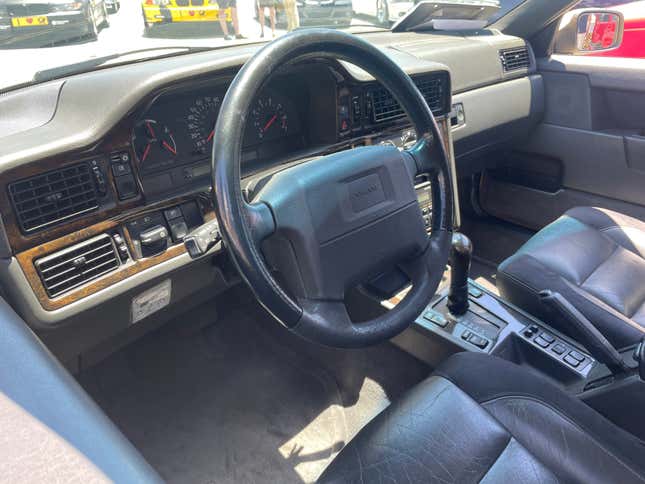The Beautiful Simplicity Of Driving Of Driving A Volvo Performance Wagon From the 90s

We can all agree that a station wagon is basically the ultimate enthusiast’s vehicle. There’s just something about those long-roof machines that do everything. When you throw on things like turbocharged engines and all-wheel drive, it’s just icing on the cake. Unfortunately, not many wagons exist in the U.S. anymore. Volvo is one of the last holdouts. And recently they gave me the chance to get behind the wheel of one of their classic wagon models.
Why You Should Trade in Your Old Audi A3 for a Used Polestar 2 | WCSYB?
Image: Volvo
While the 850 made an excellent but rather sedate wagon — it was the first car in the world to come equipped with side impact airbags, for instance. Volvo wanted in on the performance game, though, and it introduced the high-performance 850 R wagon for 1995. It got a 240 horsepower turbocharged inline-five, a four-speed automatic transmission, a unique front fascia with lower air dam, dark gray 17-inch wheels and a rear wing. It was quick and one of the fastest wagons in the 1990s, if not the fastest. Independent testing showed it could hit 60 mph in just 6.7 seconds before topping out at 149 mph.

Image: Lawrence Hodge/Jalopnik
Volvo brought a mint example for me to try out at WagonFest SoCal 2024. This one was a real treat and was painted in Cream Yellow. The color is significant because it was one of only 49 ever brought to the U.S. This particular 850 R was privately owned until Volvo purchased it from the owner back in 2017. And they actually drove the thing, which is beautiful to see — the odometer read just over 148,000 miles.

Photo: Lawrence Hodge/Jalopnik
Getting into the 850 R, I was immediately transported back in time. I drive a lot of cars, but I haven’t been in a car this old in a while. It was a wonderful change given the car’s simplicity. No huge screens. Actual, physical buttons and switches to control everything. No push button start; an actual key for the ignition. Turning the key and starting up that 30-year-old I5 , I was able to feel everything from the click of the ignition to the shuddering while the engine was turning over. You can’t say that about too many cars now.
The engine sounded good though, which told me that despite being in storage most of the time, Volvo keeps up with its maintenance. That didn’t mean Volvo didn’t want one of its pricey historic cars babied. The Volvo rep riding with me told me to make sure I keep an eye out on the engine temp, especially given the heatwave we’ve been going through. And there were a few other small, rough edges. The A/C didn’t work, for instance. Aside from that, and given the miles and age, the state of the interior was pretty damn good.
After letting the car sit for a couple minutes I set off on a short trek down L.A.’s annoyingly busy Fairfax Blvd. Getting underway, the sensations I was getting while driving were confusing. On one hand, you feel the car’s age when going over uneven or rough parts of the street. On the other, I wondered if this was just me being spoiled and so used to modern cars and their adaptive suspensions and sound deadening. Giving it a bit of gas to make it across an interaction, I was met with actual engine noise from the turbocharged I5. Giving it a bit more — with the OK from the Volvo rep of course — I got hit with something I never thought I’d miss: torque steer. Putting 250 horses through just the front wheels tended to produce that in these things. Being so used to modern cars though, electronics and engineering advances means that torque steer has almost been eliminated. Feeling it again was weirdly great.
Even though my drive in the 850 R was brief, I’ll never forget it. It was a reminder I needed of just how far cars have come in the last 30 years. While that’s brought some advances that have benefited customers and companies alike, it’s also come at the expense of complication and most importantly, driving feel. I also gained an understanding of why the 850 R is so sought after. It’s fantastic, and we’ll likely never see anything like it again. If you’re lucky enough to own one, don’t ever get rid of it.



